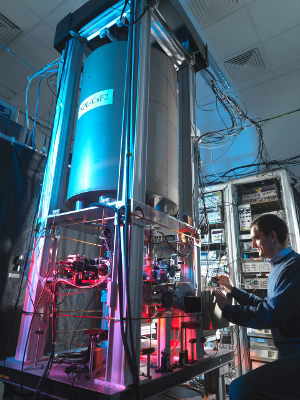This article is more than 1 year old
At the third beep, the Atomic Clock will be 60 ... imprecisely
The science that makes GPS (and a whole lot more) possible
Second to none
Prior to atomic clocks, the most accurate time was ephemeris time, based on the rotation period of the Earth around the Sun. This had been adopted because the Earth day varies so much by scientific standards; even though the man in the street doesn't notice. Another problem was that the Earth’s rate of rotation is slowing down, largely due to tidal energy dissipation.
The decision was taken to divide the frequency of the Caesium quantum radiation by a whole number that produced clock pulses one ephemeris second apart, so that the second would not change at the time of adoption or ever again. The division factor chosen is 9 192 631 770. As atomic time is now fixed for ever; it is necessary to modify it using leap seconds to obtain time suitable for Earthlings that reflects the actual rotation of the earth.
With the metre and the second specified in terms of stable quantum events, it became possible accurately to measure the speed of light.
The first Caesium clock was quite a substantial piece of equipment as it was designed to prove the principle rather than to be a product. However, once the principle was established, it was not long before it was incorporated in smaller units. As a result it became possible to test the time dilation predictions of Einstein’s theories.
In 1971, a pair of Caesium clocks was taken around the world in both directions in commercial airliners. The differences in apparent time between clocks that stayed behind in Washington DC and those that flew agreed with Einstein’s predicted effects within experimental error, and so relativity theory was shown to be consistent with the effects of reduced gravity due to altitude and the speed of the airliners.

Krzysztof Szymaniec with the NPL-CsF2, the most accurate
long-term timekeeper in the world. Pic courtesy of NPL
Relativistic time dilation doesn't play a big part in everyday life. We spend most of our time on the surface of the Earth in the same force of gravity and in our activities we don't approach the speed of light and we can happily use Newton’s Laws. Probably the only way in which it is relevant to most people is that without correction for time dilation the GPS system wouldn't be accurate.
If we have two synchronous atomic clocks and they are moved apart, the distance between them can be measured if one of them transmits the time, because the transmission will be at the finite speed of light. A synchronous atomic clock could figure out where it was in two dimensions with respect to two other clocks transmitting the time, and in three dimensions with respect to three transmitting clocks. That is the basis for a navigation system. However, it is not really practicable to have an atomic clock in the receiver. The solution is to have a minimum of four clocks transmitting the time. Then a suitable receiver can work out from the four received signals not only where it is but also what the time is.
Stationary receivers that aren't interested in navigation may receive GPS to act as a time reference. The multiple transmitters in DAB networks are synchronized by GPS. All that technology and still it sounds awful.
GPS can't use geostationary satellites because it would be difficult to communicate with them all. Instead the satellites make two orbits in the time it takes the Earth to rotate once with respect to inertial space. That time is called a sidereal day and it differs from the earth day because the latter is based on a line between Earth and the Sun, which is turning in space.
Completing two orbits per sidereal day makes the satellites repeat exactly the same tracks above the Earth’s surface. To do that they must be at precisely determined orbital radius and travelling at equally precise speed. Relativity theory suggests that a clock on board such a satellite would gain 38 microseconds every day. That may not sound much, but when it is considered that light travels well over 11 kilometres in that time, it will be seen that it makes a mess of navigation.
To overcome the problem, the clocks in GPS satellites are modified so that they run slow on the ground by just the right amount to be correct in orbit. The clocks in all the satellites are periodically updated from a master atomic clock on the ground. ®
